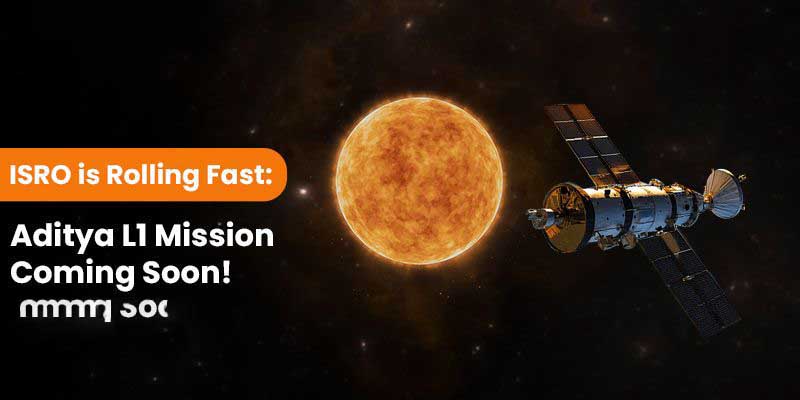ISRO is Rolling Fast: Aditya L1 Mission Coming Soon!
We are on the Moon! India is the first country to accomplish a successful soft landing on the south pole of the Lunar Surface with the Chandrayaan -3 Mission.
ISRO (Indian Space Research Organization) offers us remarkable surprises in 2023.
So, what’s next?
We will be studying the Sun now!
Yes, Aditya L1 Mission is all about the Sun.
In the history of India, Aditya L1 will be the first mission to study the Sun.
The main objective of science in Aditya L1 Mission is to study solar upper atmospheric dynamics, get a more profound knowledge of the solar corona and its heating mechanism, study the chromospheric and coronal heating, flares, coronal mass ejections, diagnose the temperature, velocity, and density of corona and coronal loops plasma, and much more.
So, let’s understand the incredible mission of ISRO through this blog.
Get Ready to Watch Journey to The Sun!
According to India Today, the ISRO Chief said, “Aditya L1 is getting ready. It will launch soon. Biggest project after Chandrayaan-3”. The Aditya L1 Mission is scheduled to be launched on 2 September 2023.
You will be happy to know that the ISRO PSLV XL rocket spacecraft has already reached Satish Dhawan Space Centre (SDSC, SHAR), Sriharikota.
According to the ISRO Report, Seven payloads in the spacecraft will help observe the photosphere, chromosphere, and corona. The spacecraft uses electromagnetic particle and magnetic field detectors.
As the spacecraft is placed in the halo orbit*, it can view the sun continuously without any eclipses. So, observing solar activities and space weather in real time will become easier.
With the launch of Aditya LI, we can get essential information to understand the problems of the coronal mass ejection, coronal heating, flare, and pre-flare activities, characteristics of flare and pre-flare activities, propagation of particles and fields, and so on.
The seven payloads of the spacecraft are divided into two types:-
- Remote Sensing Payloads- Four payloads include Visible Emission Line Coronagraph (VELC), Solar Ultraviolet Imaging Telescope (SUIT), Solar Low Energy X-Ray Spectrometer (SoLEXS), and High Energy L1 Orbiting X-Ray Spectrometer (HEL1OS).
- In-Situ Payloads- In-situ payloads include three payloads: Aditya Solar Wind Particle Experiment (ASPEX), Plasma Analyser Package for Aditya (PAPA), and Advanced Tri-axial High-Resolution SSMD Magnetometers.
In a nutshell, Remote sensing payloads will directly view the sun, whereas In-Situ payloads will provide information on the local environment at L1.
The main objective of science in Aditya L1 Mission is to study solar upper atmospheric dynamics, get a more profound knowledge of the solar corona and its heating mechanism, study the chromospheric, and coronal heating, flares, coronal mass ejections, diagnose the temperature, velocity, and density of corona and coronal loops plasma, and much more.
Conclusively,
Say all the best to ISRO and wish the ISRO team good luck in making Aditya L1 Mission successful just as Chandrayaan-3.
*halo orbit- Halo orbit is a three-dimensional, periodic orbit near one of the Lagrange Points( L1, L2, or L3) in the three-body problem of orbital mechanics.
SSMD Pte Ltd,, August 29, 2023
















